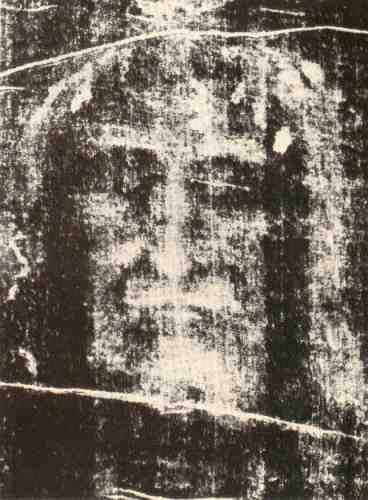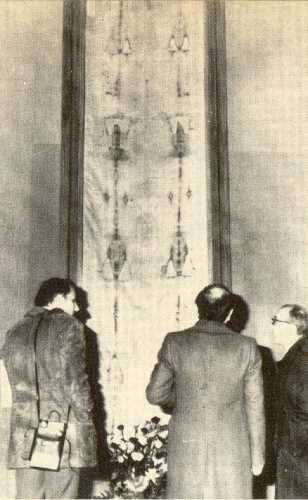I hope you understand," said a current editor of Scientific American, "that [our magazine] is under new ownership now, and we certainly wouldn't have published that article today. It was nonsense."
He was referring to Scientific American's March 1937 article on the shroud of Turin, believed by many to be the very cloth which covered the body of Christ after it was taken down from the cross.
Opinions are very heated and dogmatic on the subject of the shroud. Is it a miracle? A hoax? Is it genuine? Among the religious, Protestants in general have tended to voice skepticism; modern Catholics, belief. Secular scholars, following their own dogma of demanding proof rather than mere speculation, have almost unanimously judged it a religious hoax.
But Robert Wilcox, former religion editor of the Miami News, came to the conclusion the relic is genuine. In 1977 his book Shroud stirred anew the centuries-old authenticity debate.
In the Beginning?
Curiously enough, it was a Roman Catholic bishop who first branded the shroud a fraud. When, in the year 1356, the fourteen-by-three-and-a-half-foot piece of linen was exhibited at the obscure church of Lirey in central France — the first known historical record of its existence — it quickly became the subject of a lengthy memorandum to the Pope from Henry of Arcis, bishop of Troyes. Bishop Henry alleged that the Lirey canons had "falsely and deceitfully, being consumed with the passion of avarice and not from any motive of devotion but only of gain, procured for their church a certain cloth cunningly painted, upon which by clever sleight of hand was depicted the twofold image of one man, that is to say the back and the front, they falsely declaring and pretending that this was the actual shroud in which our Savior Jesus Christ was enfolded in the tomb."
The actual painter, he went on, had been discovered by one of his predecessors and, being summoned to the bishop's presence, had candidly admitted the painting to be "a work of human skill and not miraculously wrought or bestowed" (Ian Wilson,' The Turin Shroud, p. 230).
To be fair, however, it is necessary to state that modern investigators of the cloth and its image have found no trace of paint on its surface or in its fibers. The source of the color of its faint markings has therefore been sought elsewhere. The 1937 Scientific American article, for instance, stated: "It is now established also that there are particles of blood on the Shroud, so well preserved that they still show the composition of the blood. Beyond doubt, the two figures on the Shroud are the imprints of a human body . . . evidently that of a man who was crucified."
Yet here, too, modern examination tells a different story. A board of scientists appointed by the diocese of Turin reported in 1976 that the coloring agent used does not appear to be blood, for there is no penetration of the fibers, no surface encrustation and no reaction to benzidine tests.
According to Wilcox (Shroud, p. 45), twenty-one popes — from Sixtus V in the 1470s to Paul VI in the 1970s — have expressed confidence in the authenticity of the shroud. Pope Paul VI called it "the most important relic in the history of Christianity" (U.S. Catholic, May 1978, p. 48). Many individual church scholars have pronounced themselves convinced. Yet even today there is "a strong antishroud contingent in the church, and the church has withheld official judgment" (ibid).
The Look of the Shroud
When actually seen today, the linen of the shroud is ivory-colored, almost yellow. On it is the faint life sized double image of a human figure — as if the cloth had been draped over a man's head, allowed to contact both his front and back, and had somehow taken on the characteristics of a photographic negative. Darker-hued markings seem to be but wrinkles. The most prominent colorations are the burn and water marks suffered in 1532 when the shroud's silver reliquary partially melted in a building fire. One corner of a fold is entirely burned through.
But for all this, the cloth is very clean-looking; the outline of a man is rather obscure. It does not appear to the naked eye as the pictures show it, with their considerable contrast, a maze of light and dark reversed and strengthened by modern photography. Rather its markings are only shadows that shade imperceptibly into the background of the cloth.
"The closer one tries to examine it [the image itself] the more it melts away like mist. . . . Except when viewed from a distance, the image is extremely difficult to distinguish" (Wilson, p. 9).
The markings have been described as carmine, carmine-mauve, or carmine-rust. But pale brown or sepia is closer to the fact, though the alleged bloodstains are said to show a tinge of red. Some have claimed to detect faint blood marks even under the hairline — from the crown of thorns which was jammed down on Christ's head, they say — and 100 or so marks all over the body which they attribute to the flagellation He received from the Roman lictor.
In any case, what adds to the mystery of the shroud image is that its light and dark areas are actually reversed, like a photographic negative. How could any deliberate forger of the 14th century, having never seen a negative (since photographic negatives are an invention of the 19th century), have known to reverse the shades? Or how it should look when done?
This is but one of several pieces of evidence which have led many investigators to conclude the shroud image could only have been produced by some kind of close contact with a human body, probably of one who had been crucified. But how? And whose body? And where and when? These questions all remain a mystery — and subjects of continuing controversy.
How Was the Image Produced?
Other cloths have been found from Egyptian tombs, and some shrouds "of known martyrs" (Wilson, p. 210), which have shown faint impressions of the high spots of the face or back of a corpse with which they had been buried. But not one has anything like a clear image. They also show decomposition stains from the decay of flesh rather than exhibiting "photography," according to Wilcox (pp. 54, 117). Were other "holy shrouds," such as were exhibited in the church of Cadouin in Perigord and in Sainte-Chapelle in Paris, exceptionally good examples of this kind, with the shroud of Turin eclipsing them all?
Attempts to duplicate the postulated imprinting from the face of a corpse by the use of powdered red chalk and a cloth resulted in failure. A "negative" was produced, but "the eyes, cheeks and mouth were too low; the nose was flattened. It was at best a caricature, and nothing at all like the precise, well proportioned face on the linen surface of the shroud" (Wilcox, p. 64).
Perhaps a chemical reaction involving burial spices and ammonia from the body (especially if the body was buried unwashed) could have produced such an image?
Paul Vignon, in the Scientific American article of 1937 (translated from the French by Edward Wuenschel), wrote: "I was able to determine what kind of vapors had acted on the cloth-humid ammoniac vapors, resulting from the fermentation of urea, which is exceptionally abundant in the sweat produced by physical torture and by fever. We also determined that the vapors had reacted with aloes, which were spread on the cloth and sensitized it to the action of the vapors. The detail photographs show that the aloes were in powder form." But other scientists failed to verify such dogmatically reported results.
A more recent experiment, in which a hand was placed in a glove with aloes and oil and ammonia, did indeed induce shadings on the inside of the glove (Wilcox, pp. 16, 66, 95). But all this could prove is that brown stains could be produced on cloth by this method, though not a perfect image, even in such a closely fitting covering as a glove.
Only one other theory remained: the idea of "a sudden radiance of our Lord's body at the moment of the resurrection" (ibid., p. 119). This is the "scorch theory" which invites comparison to the images left in Hiroshima, Japan, by the first atomic bomb which, even while it was vaporizing the bodies of its victims, simultaneously cast their shadows and permanently etched them into concrete pavements. But of course this theory is the very essence of circular reasoning; it assumes the conclusion yet to be proven true and then uses the theory as part of the proof. Moreover, there exists no proof a radiation burst could any better produce detailed images of wounds, blood flows, hair and beard, or a precise image of a three-dimensional body on a flat cloth than any other suggested methods.